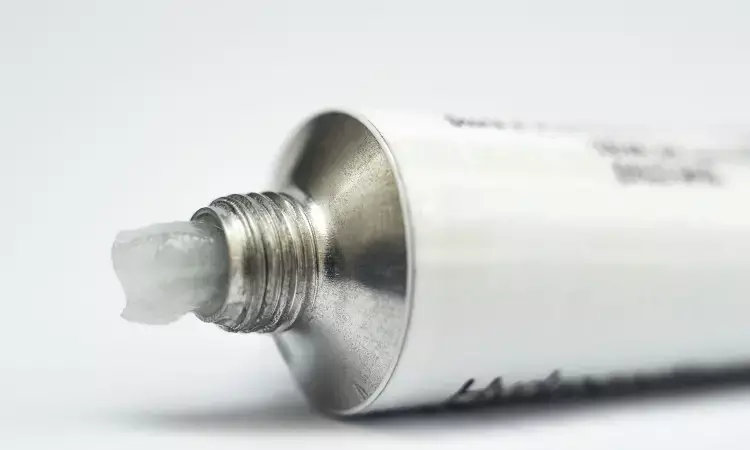- Home
- Medical news & Guidelines
- Anesthesiology
- Cardiology and CTVS
- Critical Care
- Dentistry
- Dermatology
- Diabetes and Endocrinology
- ENT
- Gastroenterology
- Medicine
- Nephrology
- Neurology
- Obstretics-Gynaecology
- Oncology
- Ophthalmology
- Orthopaedics
- Pediatrics-Neonatology
- Psychiatry
- Pulmonology
- Radiology
- Surgery
- Urology
- Laboratory Medicine
- Diet
- Nursing
- Paramedical
- Physiotherapy
- Health news
- Fact Check
- Bone Health Fact Check
- Brain Health Fact Check
- Cancer Related Fact Check
- Child Care Fact Check
- Dental and oral health fact check
- Diabetes and metabolic health fact check
- Diet and Nutrition Fact Check
- Eye and ENT Care Fact Check
- Fitness fact check
- Gut health fact check
- Heart health fact check
- Kidney health fact check
- Medical education fact check
- Men's health fact check
- Respiratory fact check
- Skin and hair care fact check
- Vaccine and Immunization fact check
- Women's health fact check
- AYUSH
- State News
- Andaman and Nicobar Islands
- Andhra Pradesh
- Arunachal Pradesh
- Assam
- Bihar
- Chandigarh
- Chattisgarh
- Dadra and Nagar Haveli
- Daman and Diu
- Delhi
- Goa
- Gujarat
- Haryana
- Himachal Pradesh
- Jammu & Kashmir
- Jharkhand
- Karnataka
- Kerala
- Ladakh
- Lakshadweep
- Madhya Pradesh
- Maharashtra
- Manipur
- Meghalaya
- Mizoram
- Nagaland
- Odisha
- Puducherry
- Punjab
- Rajasthan
- Sikkim
- Tamil Nadu
- Telangana
- Tripura
- Uttar Pradesh
- Uttrakhand
- West Bengal
- Medical Education
- Industry
Topical sodium thiosulfate effective treatment of calcinosis cutis

Topical sodium thiosulfate effective treatment of calcinosis cutis, finds a new study. The researchers have found thatS sodium thiosulfate (STS) and sodium metabisulfite (SMS), which generates an in vivo metabolite of STS, are both potential treatments for calcinosis cutis (CC).
The researchers conducted a systematic review to summarize the published data on the efficacy and safety of topical STS/SMS as therapy for CC. This review was registered on the PROSPERO database (CRD42019129818) and executed according to PRISMA guidelines. The literature search was performed using MEDLINE, Embase, SCOPUS, ScienceDirect and PubMed, from each database's inception to October 16, 2020.
This systamatic review was conducted by Jose W. Ricardo MD and colleagues, the final report was published in Mendeley Data on 16th September, 2021.
The search technique made use of variants of the keywords "calcinosis cutis," "sodium thiosulfate," and "sodium metabisulfite." Articles were also hand-searched by going over their reference sections. Patients with histologically or radiographically diagnosed CC who had been treated with topical STS/SMS monotherapy were eligible for participation. All studies were individually assessed for eligibility by two writers, with any discrepancies addressed by the senior author. A modified version of the Newcastle-Ottawa Scale was used to assess the risk of bias.
In the end, fourteen papers (6 case series and 8 case reports) reporting on 42 individuals were included, along with three instances from the researchers' personal experience. Our population had a mean age of 50 years (standard deviation: 24 years, range: 6–82 years), with 35 (78 %) women and 10 (22 %) males. A variety of STS/SMS vehicle compositions were used; the most frequent (66%) was 25 % STS, followed by 10 % STS (25 %), 25 % SMS (7 %), and 20 % SMS (2 % ). Therapy results were classified as either complete response (resolution of skin lesions), partial response (any degree of improvement), or no response (no response for individuals who did not react to treatment in any way). With the use of STS/SMS, 9 (20%) of the 45 patients achieved a full response. A partial reaction was seen in 26 (58%) of the cases, while no response was recorded in 10 cases (22% ). The mean duration for improvement in those with a partial response was 4 months (SD: 5 months); the mean duration for complete response was 5 months (SD: 4 months); and the mean duration for overall first improvement was 4 months (SD: 5 months) (SD: 5 months).
The average length of therapy was four months (SD: 4 months). One patient experienced a mild adverse event; one patient with a zinc allergy felt local discomfort as a result of application. The most important faults in methodologic quality were the lack of a clear selection technique and a sufficiently long follow-up time (6 months or more); just 3 (21%) and 2 (14%), respectively, studies satisfied these requirements. In conclusion, STS/SMS may be considered as first-line therapy for the treatment of CC because to its good safety profile.
Reference:
Ricardo, J. W. (2021). Supplementary material - Topical Sodium Thiosulfate as Treatment of Calcinosis Cutis: Case Series and Systematic Review [Data set]. Mendeley. https://doi.org/10.17632/SSPDD95RCS.1
Medical Dialogues consists of a team of passionate medical/scientific writers, led by doctors and healthcare researchers. Our team efforts to bring you updated and timely news about the important happenings of the medical and healthcare sector. Our editorial team can be reached at editorial@medicaldialogues.in.


